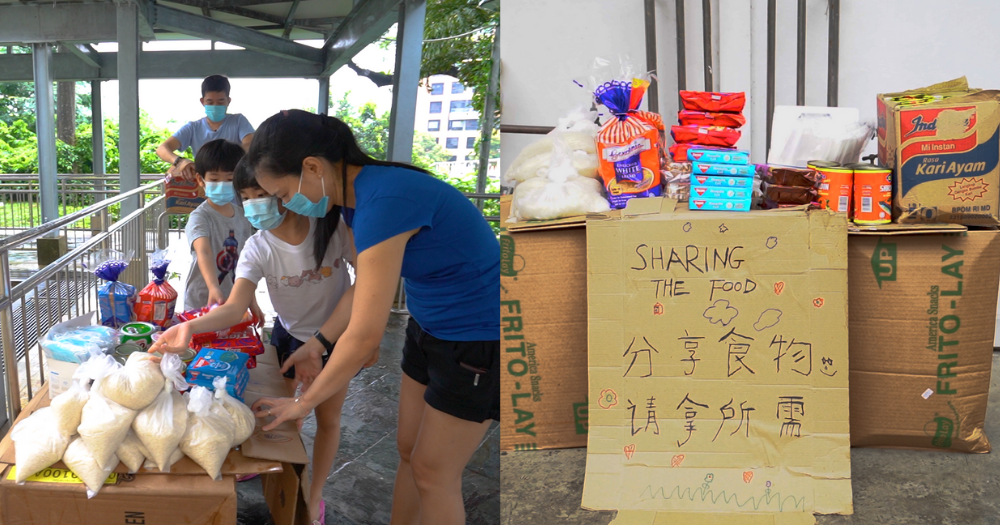If you happen to be strolling along a pathway in an area that happens to be have a lot of rental flats and you see a couple of cardboard boxes stacked high with rice, crackers, sardines, and other non-perishable goods, do not be alarmed.
It might just be an Unmanned Free Food Pantry, set up by business owner Ken Yeo and his family.
"We started the Unmanned Free Food Pantry so that we can give back to society and reach right directly to lower-income families," Yeo tells us one Saturday afternoon, as we join them on a trip to set up Unmanned Free Food Pantries in Jalan Kukoh.
After reading online about free food pantry set-ups overseas, Yeo decided that he wanted to try to bring the concept of small-scale, pop-up food pantries to Singapore's neighbourhoods, especially with Covid-19 hitting low-income households particularly hard.
He and his wife Joey Lim introduced their children — 9-year-old Kaylea and 7-year-old Jerald — to the idea by working together as a family to set up Unmanned Free Food Pantries in lower-income neighbourhoods, in hopes of helping financially vulnerable households while also teaching their kids an important lesson in giving.
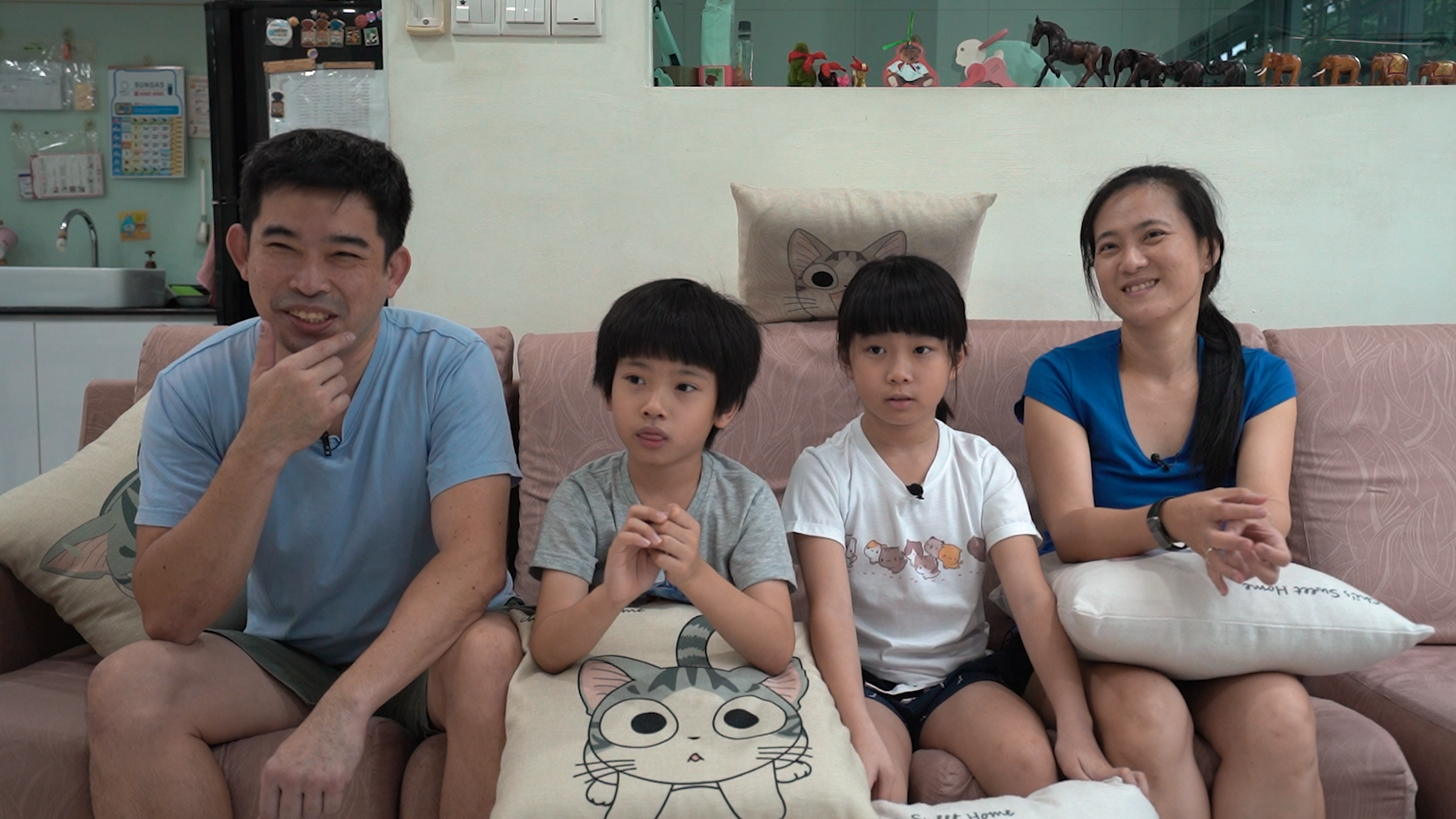 From left to right: Yeo, Jerald, Kaylea, and Lim. Photo by Jane Stephanie.
From left to right: Yeo, Jerald, Kaylea, and Lim. Photo by Jane Stephanie.
When Yeo first introduced his children to the idea, he did so by explaining the importance of giving back to society.
"If we can't help everybody, at least we help somebody," he told them.
Provide a variety of food for residents to take as they wish
So how do the Unmanned Free Food Pantries work?
The family buys a variety of nonperishable food items and surgical masks and brings them to lower-income neighbourhoods. There, they arrange the items and leave them on cardboard "tables" for residents to come by and help themselves.
The family funds the Unmanned Free Food Pantries out of their own pocket. Luckily, Yeo owns a gourmet grocery shop, and is able to tap on his connections to get most of the groceries at wholesale prices. On average, the family spends S$100 for each Unmanned Free Food Pantry.
They include a variety of dried groceries for residents to take, including canned food, crackers, and rice. The latter is pre-packed into smaller bags by Kaylea and Jerald.
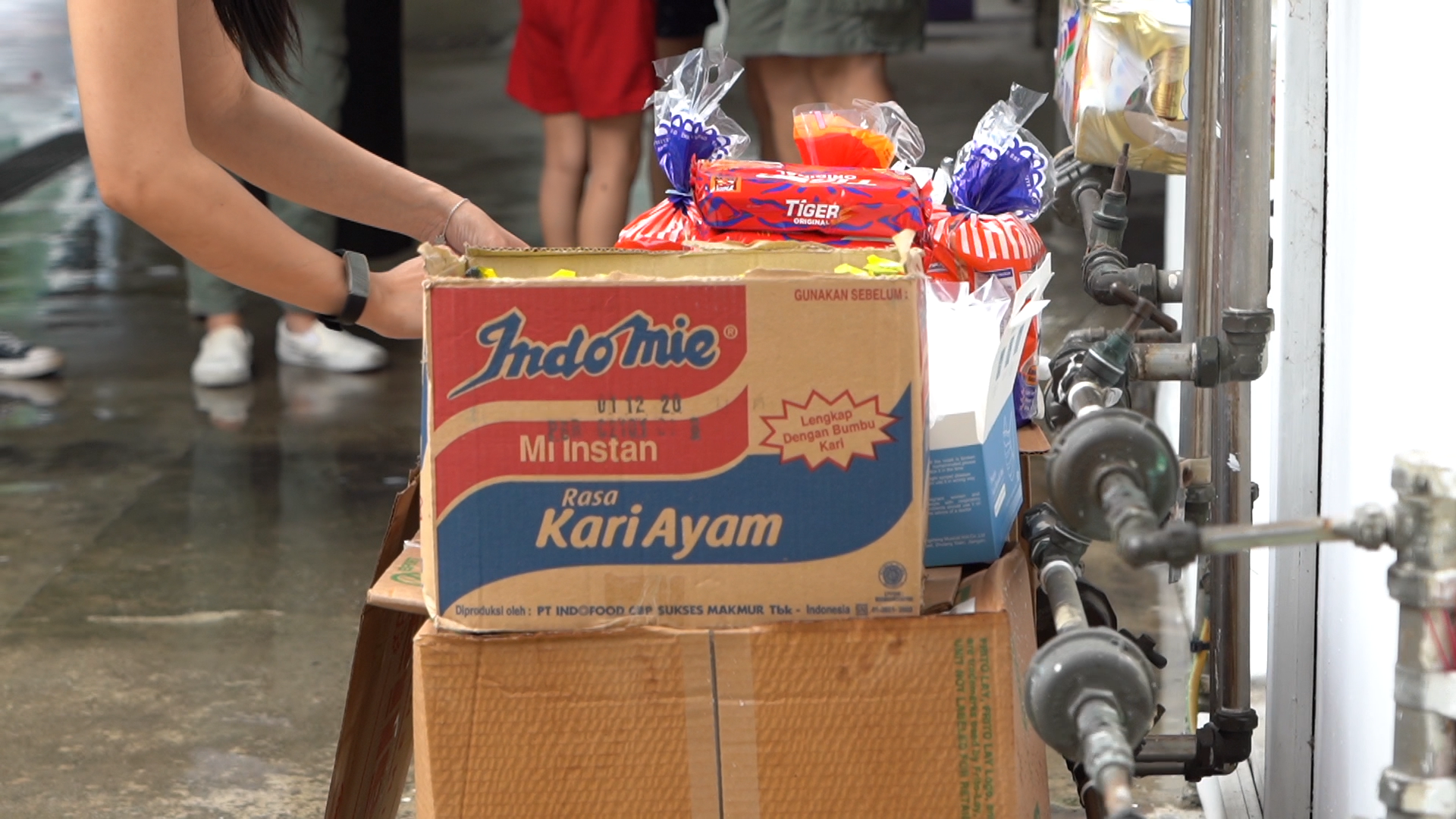 Photo by Jane Stephanie.
Photo by Jane Stephanie.
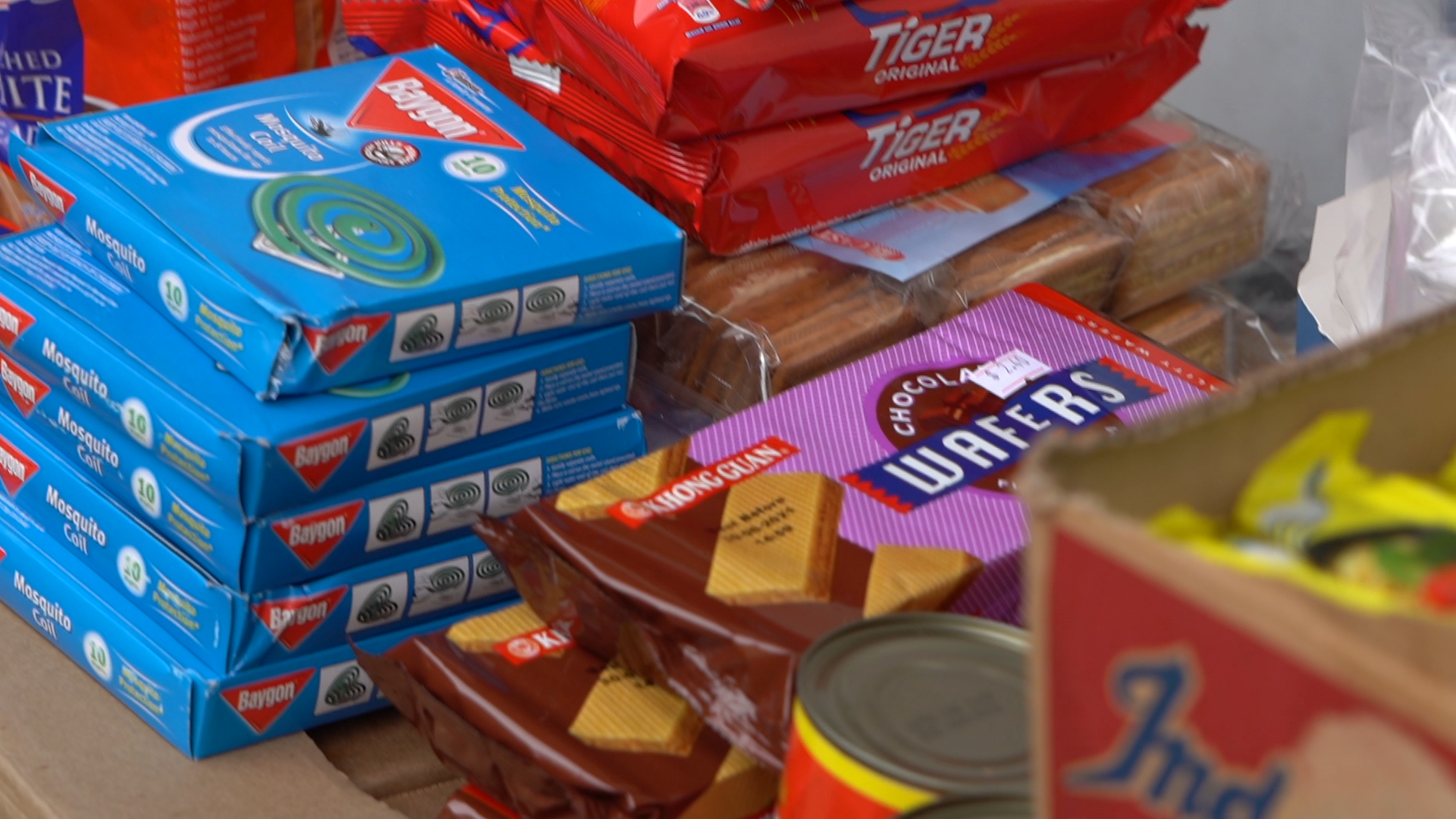 Photo by Jane Stephanie.
Photo by Jane Stephanie.
And the kids' favourite food to add to the list? "Pasta!", both Kaylea and Jerald exclaim.
The family made the decision to set up these pop-up food pantries rather than donate food to established NGOs and charities because it allows them to be more "hands-on", says Yeo:
"[When] we do it hands-on, we know how it feels — all the logistics, all the hard work. It's more fulfilling."
The Yeo family set up their first Unmanned Free Food Pantry at Spooner Road in the Tanjong Pagar area on Aug. 27.
And their second Unmanned Free Food Pantry sprung up a couple days later on Aug. 29 at York Hill in Tiong Bahru.They chose the locations that Yeo identified as being some of the most financially vulnerable neighbourhoods in Singapore, based on the Housing Development Board's (HDB) map of rental flats in Singapore.Today, we are heading out with the Yeo family to their third and latest location: Jalan Kukoh in Tiong Bahru, a neighbourhood that comprises three blocks of one- and two-room rental flats.
We will be setting up two Unmanned Free Food Pantries here in this neighbourhood.
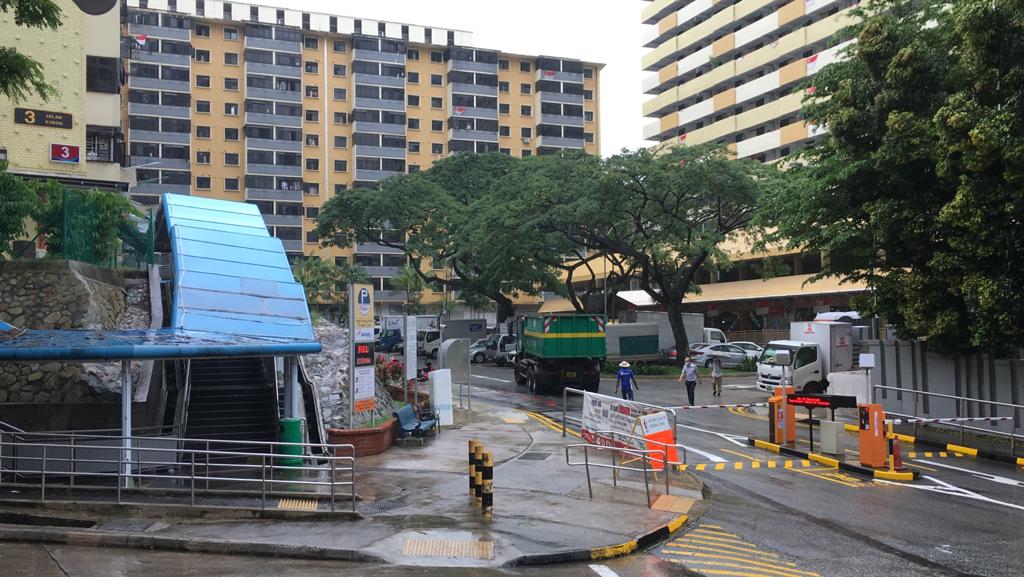 Photo by Jane Zhang.
Photo by Jane Zhang.
Use cardboard boxes as disposable "tables"
The family loads the food into their car, packed into cardboard boxes which will later double up as makeshift tables.
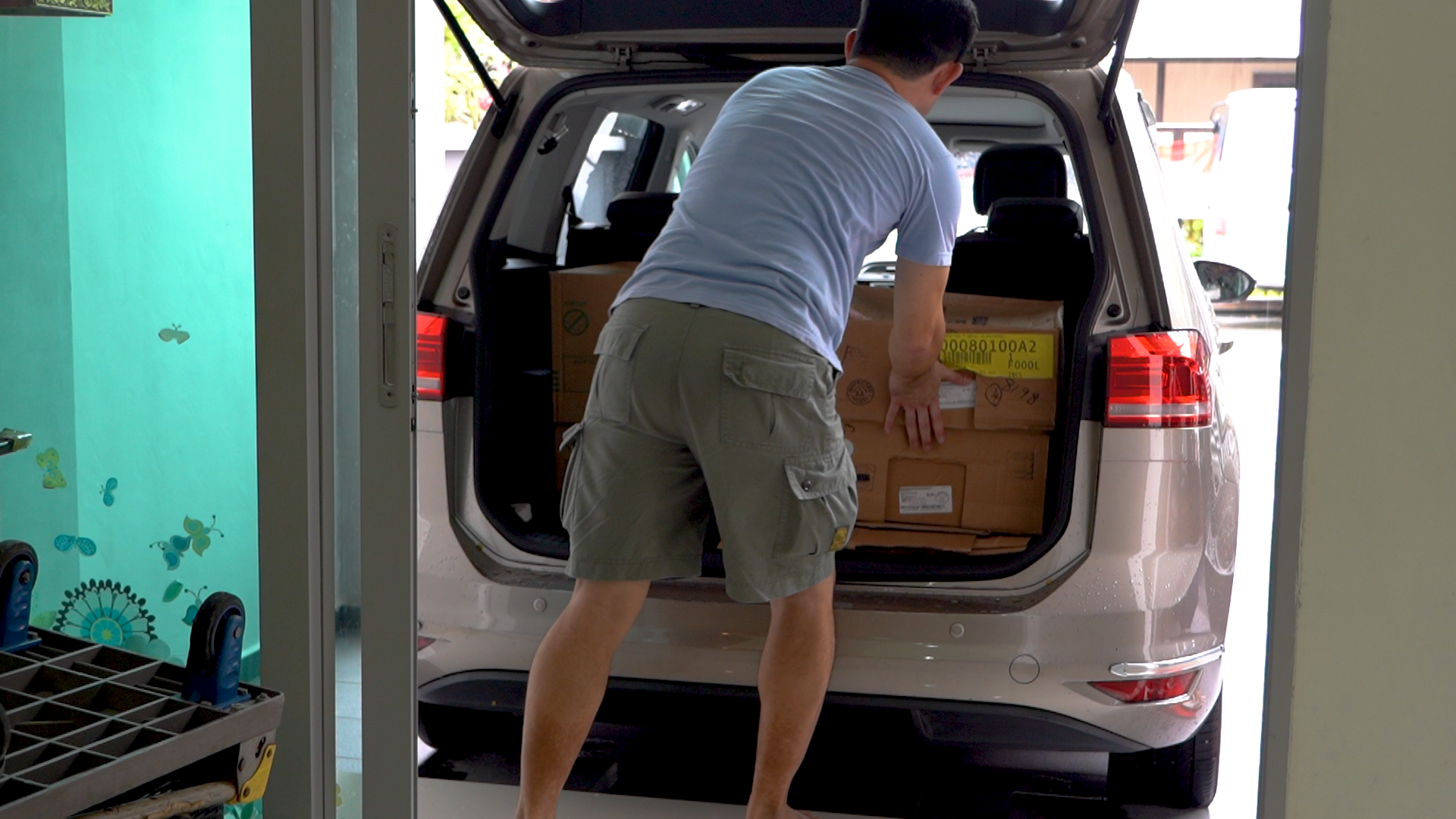 Photo by Jane Stephanie.
Photo by Jane Stephanie.
They also pack in the cardboard signs for the Unmanned Free Food Pantries, which are hand-designed by Kaylea and Jerald.
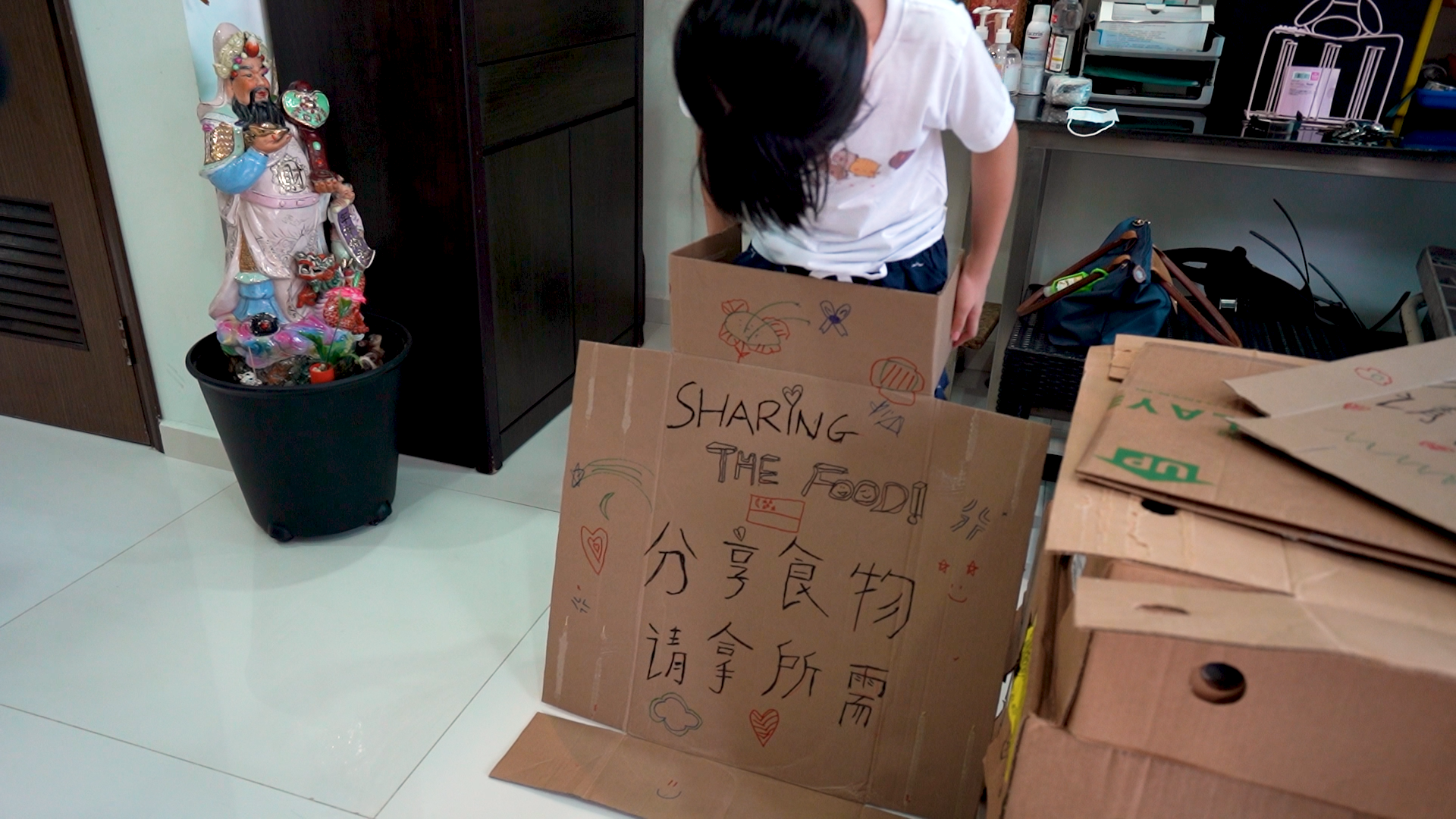 Photo by Angela Lim.
Photo by Angela Lim.
When they had first started the Unmanned Free Food Pantries, Yeo thought that they could use the stone tables and chairs found at many HDB void decks, but found that they had to change their plans:
"Unfortunately, one-bedder and two-bedder flats usually don't have such facilities, I don't know why."
Thus, they had to problem-solve, instead opting to use cardboard boxes as "tables" to place the food on.
"At first I thought daddy was going to use real wood tables," says Jerald.
"That one is a bit challenging," Ken explains, laughing.
A benefit of using the cardboard boxes as tables is also because they are easy for residents and cleaners to get rid of:
"It's sort of like disposable tables. Once the food is cleared, then they can sell or recycle the cardboard boxes."
Unexpected weather difficulties
We head over to Jalan Kukoh with the Unmanned Free Food Pantry materials.
The day prior, Yeo already scouted out two locations where they will be placing the food.
Based on Yeo's recce, the first Unmanned Free Food Pantry will be able to serve residents from a number of blocks, as it receives a good amount of foot traffic, and is near to a covered walkway.
Today, the rain has made the originally location too wet to set up the Unmanned Free Food Pantry. The family quickly finds another location that is mostly sheltered from the rain.
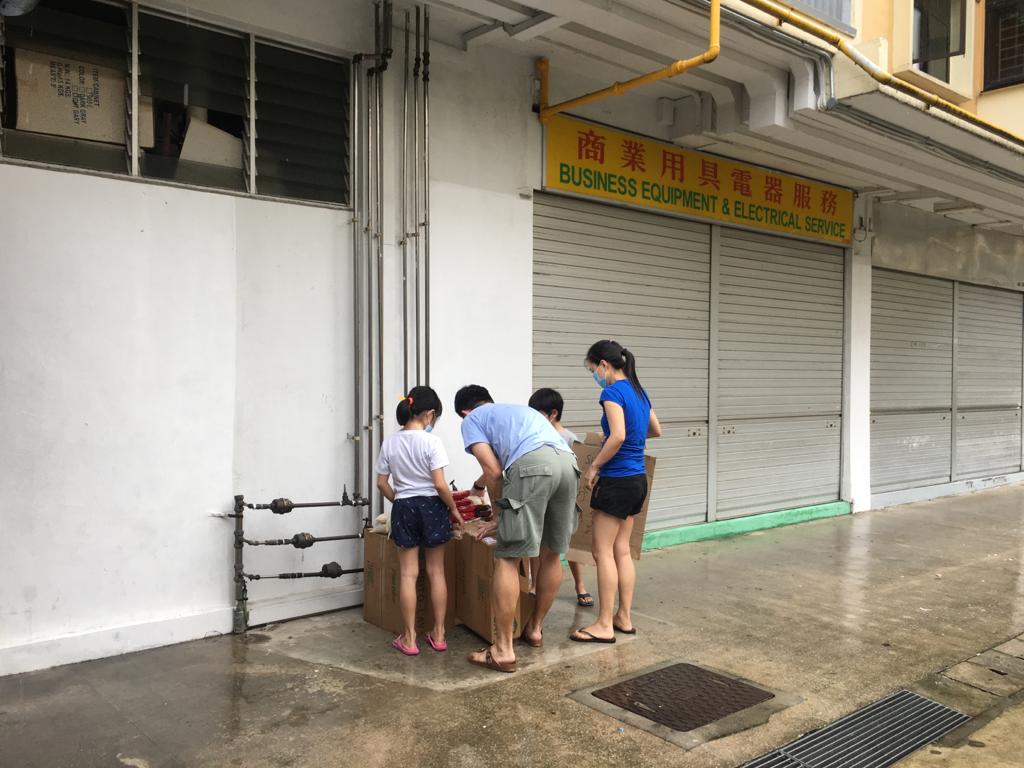 Photo by Jane Zhang.
Photo by Jane Zhang.
All four of them then get moving, setting up the cardboard boxes, working together quickly and efficiently to unload the items from the car, and somehow fit all of the food onto the small makeshift tabletop space.
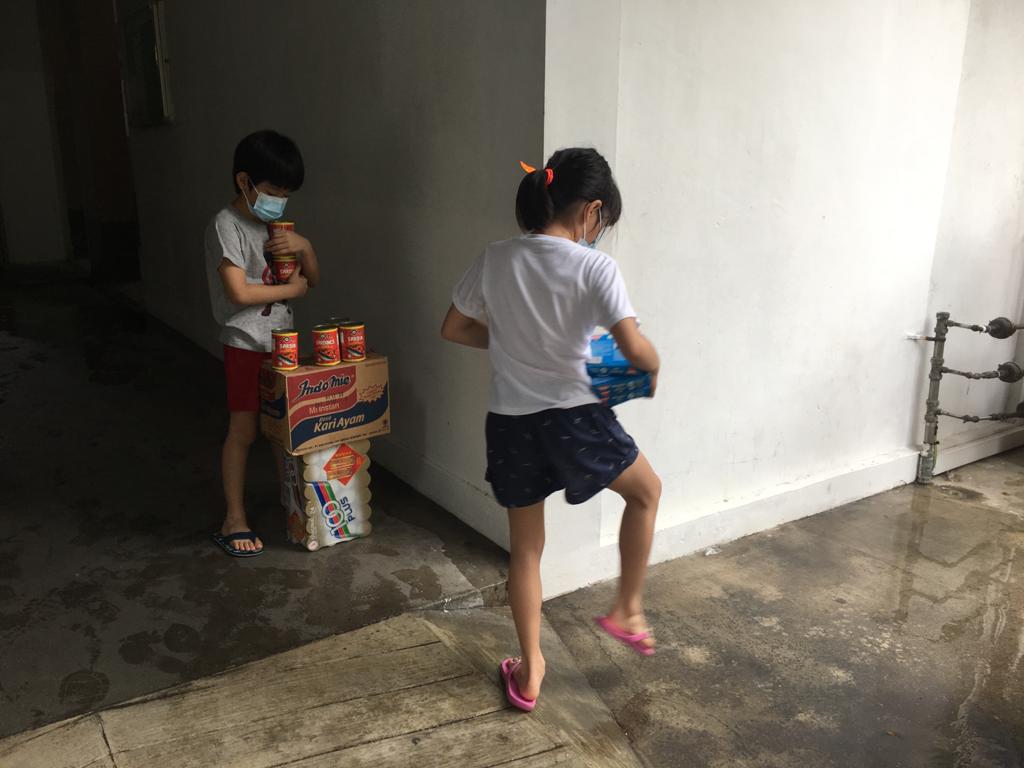 Photo by Jane Zhang.
Photo by Jane Zhang.
Jalan Kukoh is also the location of a dengue cluster, which Yeo realised when he saw a poster about it during his recce the previous day.
As such, the family also adds mosquito repellent and mosquito coils to the spread of items for residents.
As a final touch, they place the handwritten Unmanned Free Food Pantry sign in front.
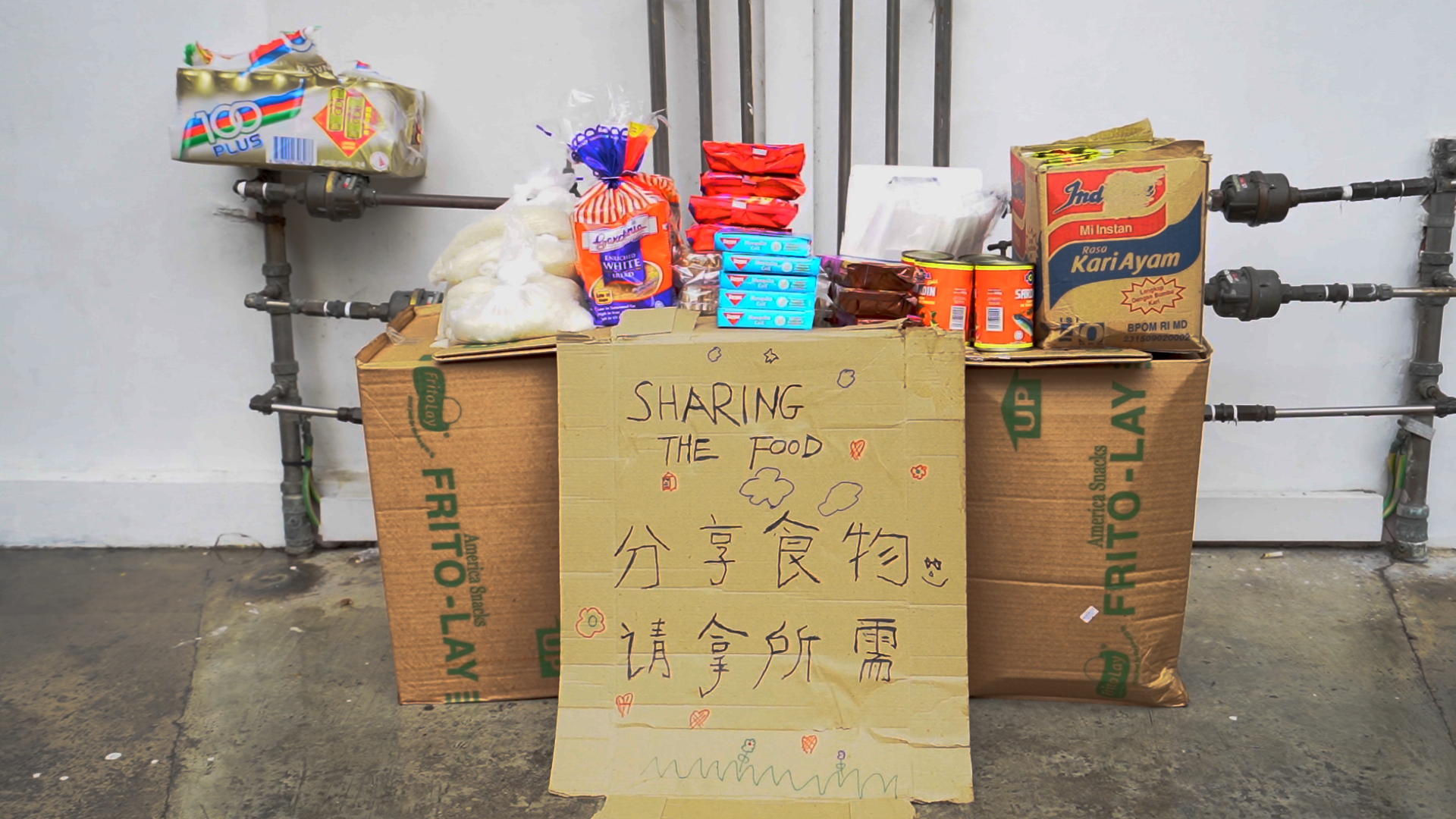 Photo by Angela Lim.
Photo by Angela Lim.
Unmanned to preserve dignity
As they put the finishing touches on the Unmanned Free Food Pantry, a couple of older residents passing by to get to the HDB lift lobby peek around the corner at the set-up.
Yeo gestures to them to help themselves to the food, and they look curiously over. However, they do not take anything, and continue on their way.
This is where the importance of the "unmanned" part of the Unmanned Free Food Pantries comes in.
"When we are there, they will be shy," Jerald explains.
Yeo elaborates on why they choose to make the food pantries unmanned, rather than be there to hand the items out to residents. It is to "give them some self-respect, dignity" he says.
"We just leave it there, we go away, rather than standing there and waiting for people to ask, 'Can you give me some food?'
It's a bit... challenging, lah, for the needy."
Instead, the family operates the Unmanned Free Food Pantries using the honour code, trusting that people will take just what they need after the family finishes the set-up and leaves.
"We didn't go and monitor it, so it's up to individuals," Lim says.
It's been good so far, shares Yeo:
"Before we left the place, we took a glance, and people just took what they need — one or two packs. Not like, grab the whole thing, or come with their trolley. So far, so good."
"We only take if we need"
After the first Unmanned Free Food Pantry is set up, we head over to another location, on the other side of the cluster of blocks, to set up a second one.
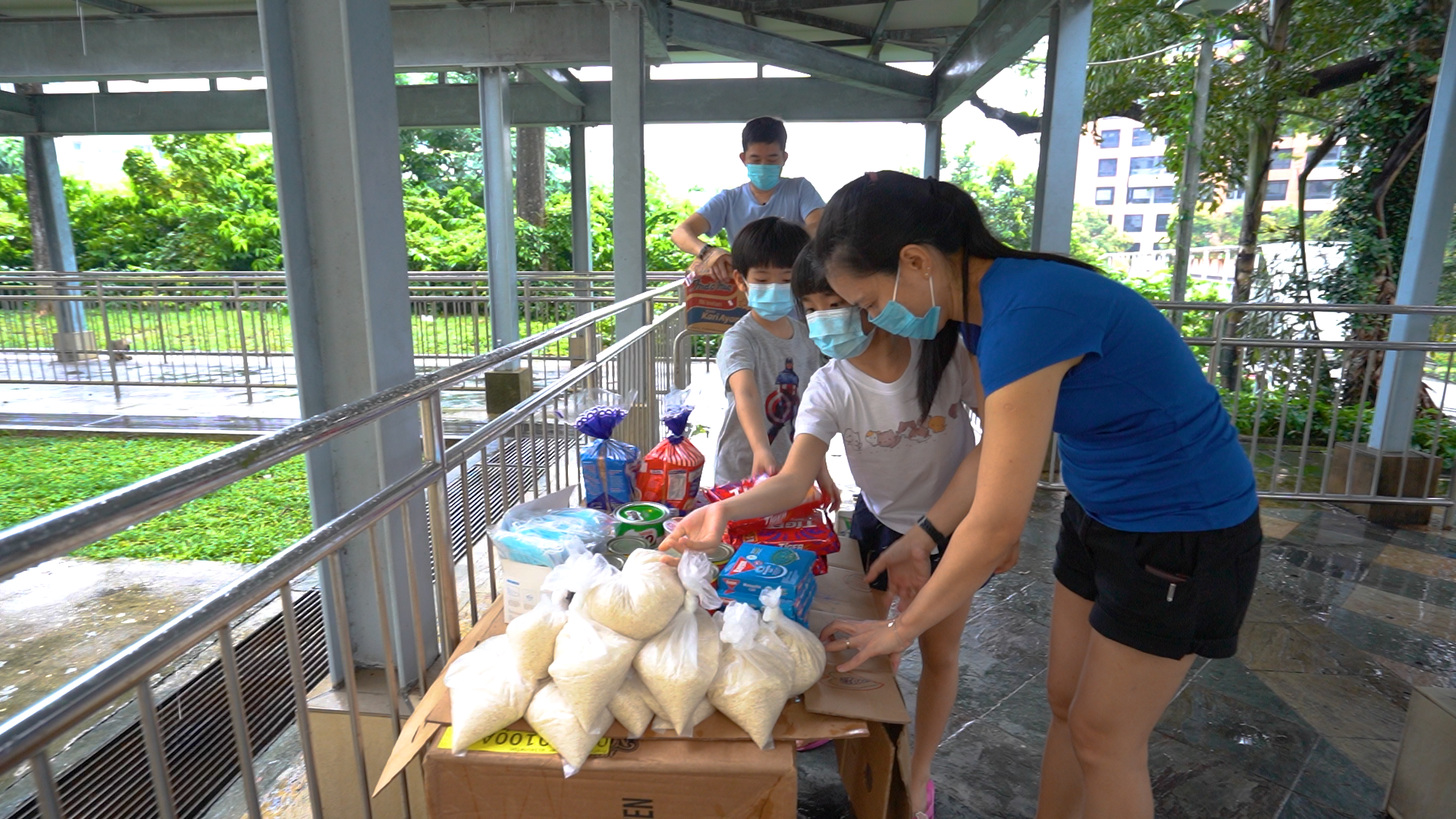 Photo by Angela Lim.
Photo by Angela Lim.
As the family lays out the groceries, a few elderly uncles and aunties sitting along the benches at the covered walkway watch them curiously.
Within 10 minutes, the Unmanned Free Food Pantry is fully set up, and the Yeo family pack up their trolley and head back to their car. As they pass the curious aunties and uncles, Yeo stops to chat with them for a few moments, gesturing toward the set-up.
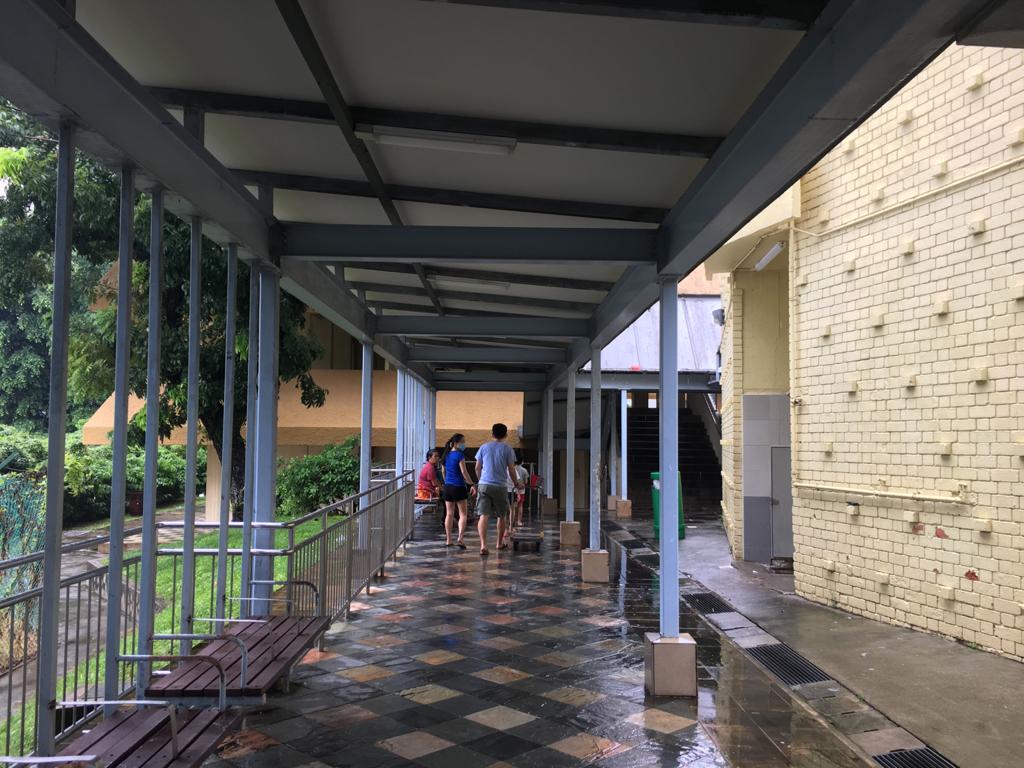 Photo by Jane Zhang.
Photo by Jane Zhang.
After the family leaves, one of the uncles makes his way over to the table.
I chat with one of the aunties sitting on the bench, who says that she has been living in the neighbourhood for 20 years.
She asks me what the set-up is, and after I explain, she says in Mandarin:
"If they put that there, there will definitely be people who will take. I don't need, because I have enough at home already.
If I have enough, then others should have this. If we don't have, only then do we take it."
Hope children will learn
The following day, I get an update from Yeo, in a series of WhatsApp messages.
"Morning," he writes. "Just visited yesterday’s site. Indeed all items were taken."
He sends me a couple photos to show the status of the Unmanned Free Food Pantries.
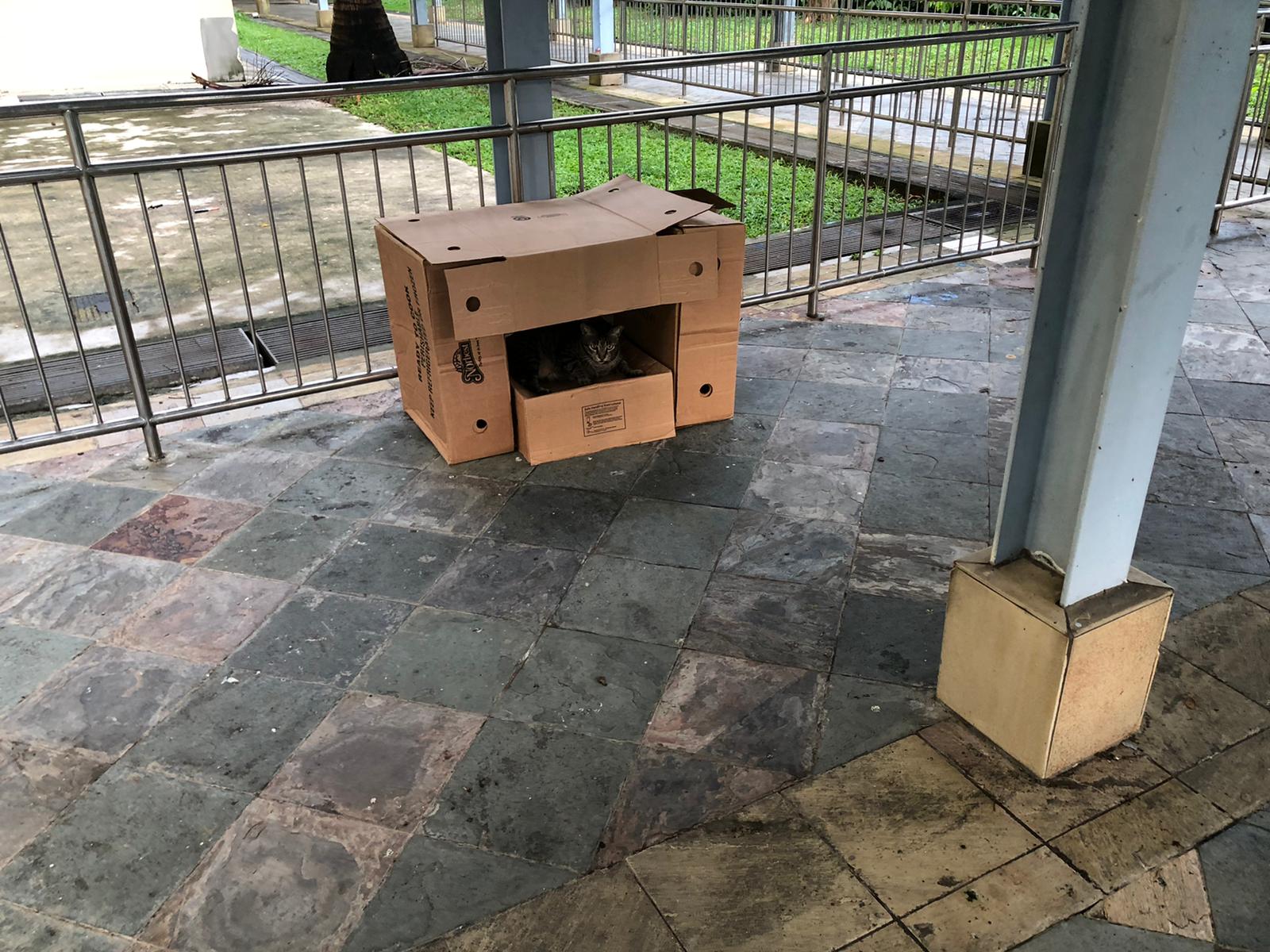 The boxes also serve yet another purpose: cat houses. Photo courtesy of Ken Yeo.
The boxes also serve yet another purpose: cat houses. Photo courtesy of Ken Yeo.
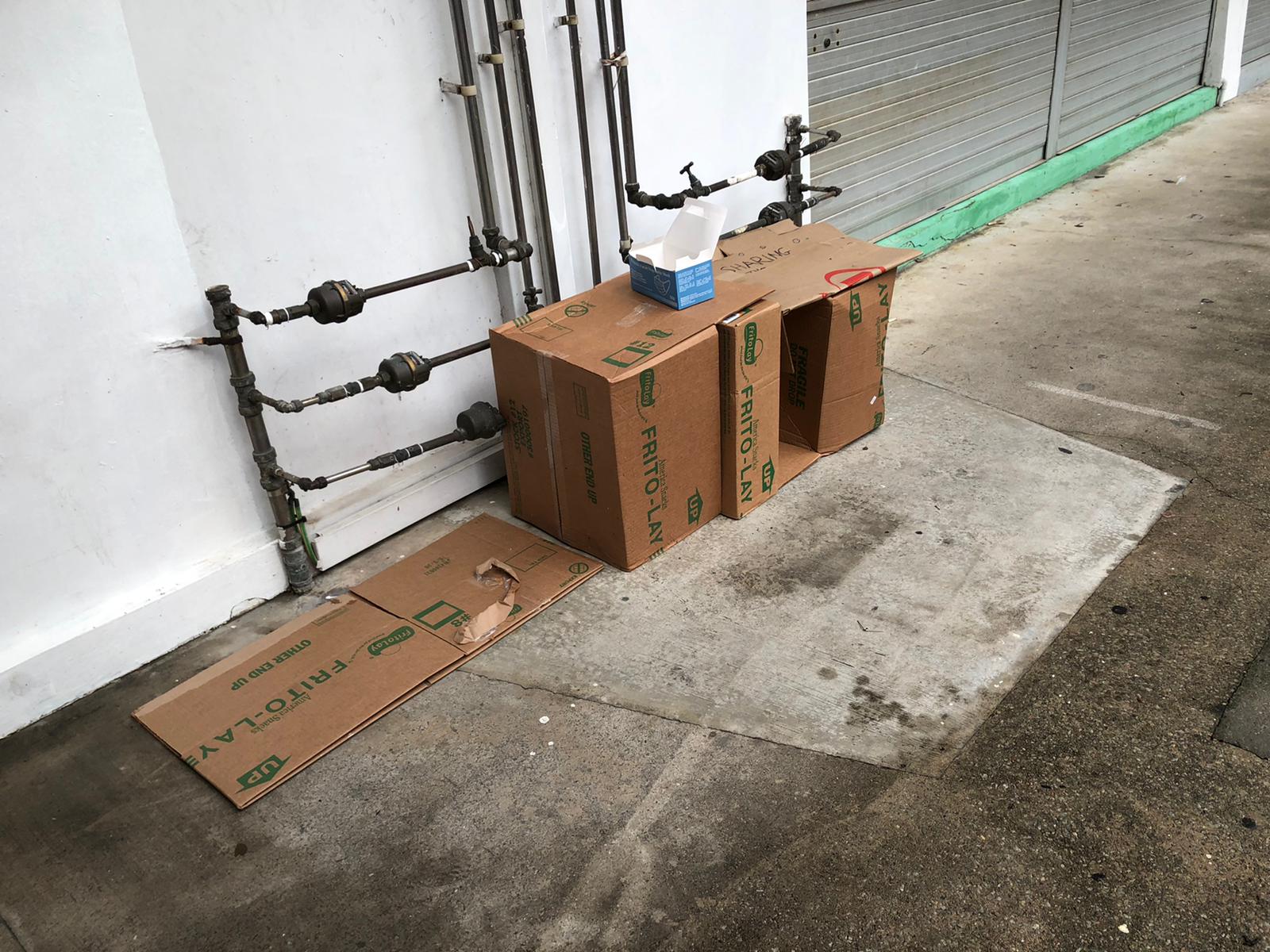 Photo courtesy of Ken Yeo.
Photo courtesy of Ken Yeo.
Yeo and Lim hope to continue doing this family project, by setting up Unmanned Free Food Pantries on an ad-hoc basis and researching other neighbourhoods that may benefit from the project.
While their small-scale, ad-hoc, pop-up Unmanned Free Food Pantries are only able to target a small number of families at each go, it's the family's way of giving back in a hands-on way, within their means.
Yeo explains that they see the Unmanned Free Food Pantries as an opportunity to "give residents an extra element of pleasant surprises".
Yeo and Lim also hope that from these experiences, Kaylea and Jerald will learn important lessons that they cannot learn from textbooks, such as not to take things for granted.
"Basically, it's about them being fortunate enough, and there are other unfortunate ones around. So, learn to share.
I think most important is about sharing, because after all, in the society it's better to give whatever is within the means."
"We will do the same next time when daddy and mommy grow old!", exclaims Kaylea.
"And they can't help us, so we'll just arrange ourselves," adds Jerald.
Watch our interview with the Yeo family here:
Anyone interested in finding out more or contacting the Yeo family about their initiative can do so via their Facebook page here.Stories of Us is a series about ordinary people in Singapore and the unique ways they’re living their lives. Be it breaking away from conventions, pursuing an atypical passion, or the struggles they are facing, these stories remind us both of our individual uniqueness and our collective humanity.
Totally unrelated but follow and listen to our podcast here
Top photos by Angela Lim.
If you like what you read, follow us on Facebook, Instagram, Twitter and Telegram to get the latest updates.
